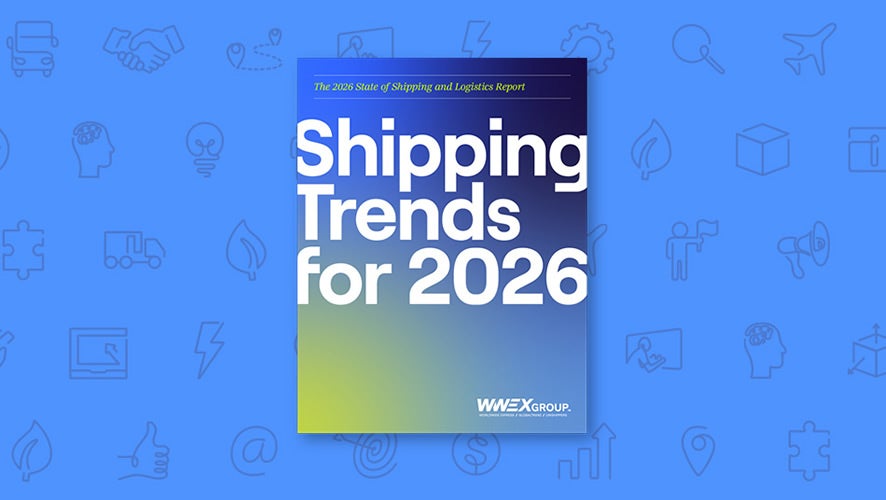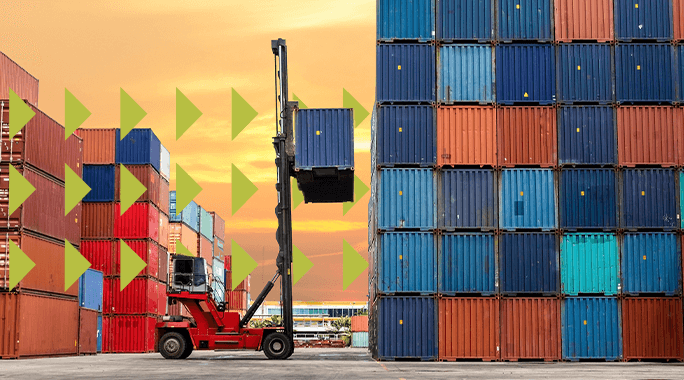BLOG POST
Parcel, LTL or bulk shipping? 5 questions to help you choose your mode.

Reading Time: 3 minutes
When you have a large order of multiple items going to the same destination, what's the best way to handle them: Ship them as individual parcels (shipments less than 150 pounds)? Package them together and arrange a less-than-truckload (LTL) freight shipment (shipments 150 to 15,000 pounds)? Or should you consider UPS® Hundredweight bulk shipping (multiple-package parcel shipments each weighing less 150 pounds)? It's a valid and complex set of questions.
In case you aren't familiar with the concept, bulk shipping is when you consolidate multiple parcels into one shipment. The items can be picked up alongside any other parcels and shipped out efficiently.
Hundredweight pricing is also a simplified rate structure. Instead of the usual methods of per-parcel or dimensional weight, shipments are given a price per hundred pounds. Add up the total weight of your packages, divide by 100 and round up to the nearest whole number. It can also be very competitive in terms of pricing compared to LTL for shipments between 200 and 500 pounds, including lower fuel surcharges and minimums per shipment.
It's not always a clearcut decision to settle on the right mode for this type of shipment. If your shipping challenges are getting more complex, a third-party logistics (3PL) provider can help you develop a strategy. But if you want to learn more on your own first, here are five considerations that can help you better understand your options.
1. Do any of the parcels exceed the carrier's weight or size limits?
If any parcel exceeds a carrier's limits and cannot be broken down into smaller packages, then parcel and bulk shipping are both off the table and you must treat it as a freight shipment. Carrier limits may vary, so check your carrier's guidelines to see if your parcels fit within them.
For instance, for UPS parcels, the maximum actual weight per package is 150 pounds. The maximum size per package is 165 inches in length and girth [(2 x width) + (2 x height)] combined. The maximum length per package is 108 inches. But with UPS Hundredweight Service®, there's no cap on the total weight of the combined packages as long as each individual one fits their guidelines.
2. What is the total weight of the parcels going to the same destination?
If the shipment is less than 100 pounds, regular parcel shipping may be more cost-effective than either LTL or bulk shipping. If the total weight is 100-500 pounds, bulk shipping may be ideal. Hundredweight is often best for lighter shipments going shorter distances. But it depends on the carrier and service, since some hundredweight services have a 200-pound minimum. If the weight is at least 150 pounds, LTL should be considered. It's typically more cost-effective for heavier shipments going longer distances.
3. How time-sensitive is the shipment?
If it needs to arrive ASAP, parcel or hundredweight shipping is probably the right choice. LTL shipments usually involve multiple stops to unload, load or transload freight, so transit times tend to be longer.
A 3PL can offer insights based on their expertise to help you decide which service can best fulfill your delivery timing requirements while considering your other parameters like cost and service levels.
4. What level of tracking do you need?
Parcel shipping will provide individual tracking numbers for each small package, and LTL is tracked as a single shipment. Hundredweight shipping gives you both - an overall tracking number as well as parcel-level tracking, giving you the best of both worlds - simplicity if you want it and more detailed information if you need it.
If you're using multiple carriers for package and freight shipments, a transportation management system (TMS) can eliminate the hassle of checking separate tracking platforms. For instance, SpeedShip®, our proprietary TMS, provides a dashboard to easily view detailed and real-time shipment status for all your shipments across carriers and modes.
5. What's your customer's inbound logistics situation?
Another consideration is whether your customer would prefer loose packages or palletized freight. If your customer is expecting numerous items, getting them as a single delivery versus receiving them at different times could be more convenient for their inbound logistics operations. Depending on whether they're set up to receive larger shipments, packages may be easier to handle than palletized freight. Bottomline, you have options to cater to your customer needs and a 3PL can help.
Have questions about shipping modes? Worldwide Express can help!
Worldwide Express has more than 30 years of success in the logistics industry and helps thousands of shippers of all sizes move products with great efficiency. We are also part of the WWEX Group family of brands. Combined, these companies make up one of the largest and most diverse 3PLs in the industry, providing shippers with top solutions that help them succeed - whether shipping parcel or freight. We have a freight carrier network of 75+ LTL and 85,000+ FTL carriers. We are also part of the largest non-retail authorized reseller of UPS in the nation, allowing to provide you with top parcel rates and solutions.
See how Worldwide Express can help you navigate shipping modes. If you are ready to talk to an expert, reach out for a free consultation today!





